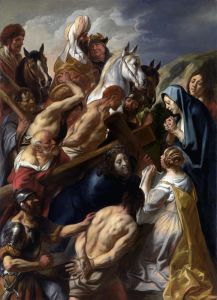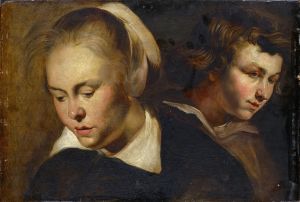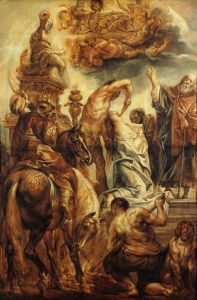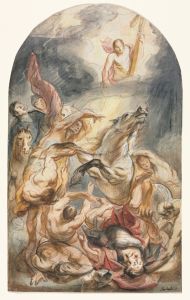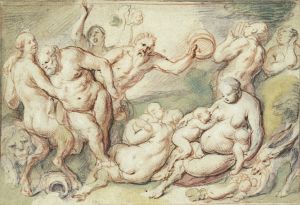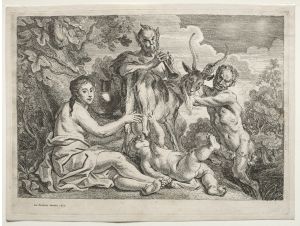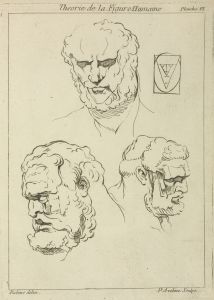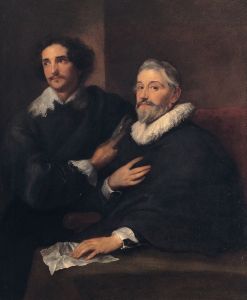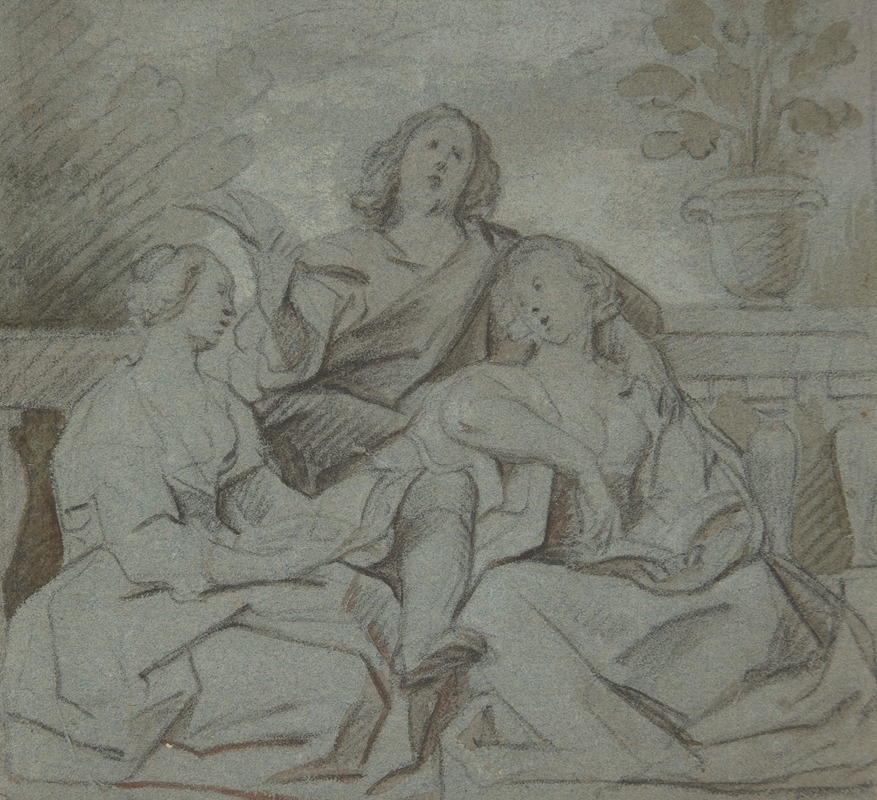
A Youth and Two Girls Singing
A hand-painted replica of Jacob Jordaens’s masterpiece A Youth and Two Girls Singing, meticulously crafted by professional artists to capture the true essence of the original. Each piece is created with museum-quality canvas and rare mineral pigments, carefully painted by experienced artists with delicate brushstrokes and rich, layered colors to perfectly recreate the texture of the original artwork. Unlike machine-printed reproductions, this hand-painted version brings the painting to life, infused with the artist’s emotions and skill in every stroke. Whether for personal collection or home decoration, it instantly elevates the artistic atmosphere of any space.
Jacob Jordaens, a prominent Flemish Baroque painter, created the artwork "A Youth and Two Girls Singing" in the early 17th century. Jordaens is renowned for his vibrant use of color and dynamic compositions, often depicting lively scenes filled with robust figures and expressive faces. This painting is a testament to his skill in capturing the essence of human interaction and emotion.
"A Youth and Two Girls Singing" portrays a musical scene, a popular subject in the Baroque period, reflecting the era's fascination with music and its role in social and cultural life. The painting features three figures: a young man and two girls, all engaged in singing. The youth, positioned centrally, appears to be leading the song, while the two girls accompany him, possibly harmonizing or echoing his melody. The figures are depicted with Jordaens' characteristic attention to detail, showcasing their animated expressions and gestures, which suggest a moment of shared joy and camaraderie.
The composition of the painting is carefully arranged to draw the viewer's eye towards the interaction between the figures. Jordaens employs a rich palette, with warm tones that enhance the lively atmosphere of the scene. The use of light and shadow adds depth and dimension, highlighting the textures of the figures' clothing and the subtle nuances of their expressions. This technique is indicative of Jordaens' mastery in creating a sense of realism and immediacy in his work.
Jordaens was a contemporary of Peter Paul Rubens and Anthony van Dyck, and like them, he contributed significantly to the development of Flemish Baroque art. While he never traveled to Italy, unlike many of his peers, Jordaens was influenced by the Italian Renaissance through the works of Rubens and other artists who had studied there. This influence is evident in his dynamic compositions and the robust, sculptural quality of his figures.
The painting is also notable for its depiction of everyday life, a theme that Jordaens frequently explored in his work. By focusing on a simple, yet engaging scene of music-making, Jordaens captures a moment of leisure and enjoyment, offering a glimpse into the social customs of his time. This focus on genre scenes was a hallmark of Flemish Baroque art, reflecting a broader interest in the depiction of ordinary people and their activities.
"A Youth and Two Girls Singing" is housed in the Royal Museum of Fine Arts in Antwerp, which holds a significant collection of Jordaens' works. The museum's collection provides insight into the breadth of Jordaens' artistic output, from religious and mythological subjects to portraits and genre scenes. This particular painting exemplifies Jordaens' ability to convey the vibrancy and vitality of human interaction, making it a valuable piece within the context of Flemish Baroque art.
In summary, "A Youth and Two Girls Singing" by Jacob Jordaens is a quintessential example of Flemish Baroque painting, characterized by its lively composition, rich color palette, and focus on everyday life. Through this work, Jordaens demonstrates his skill in capturing the nuances of human expression and the joy of communal activities, solidifying his reputation as one of the leading artists of his time.





